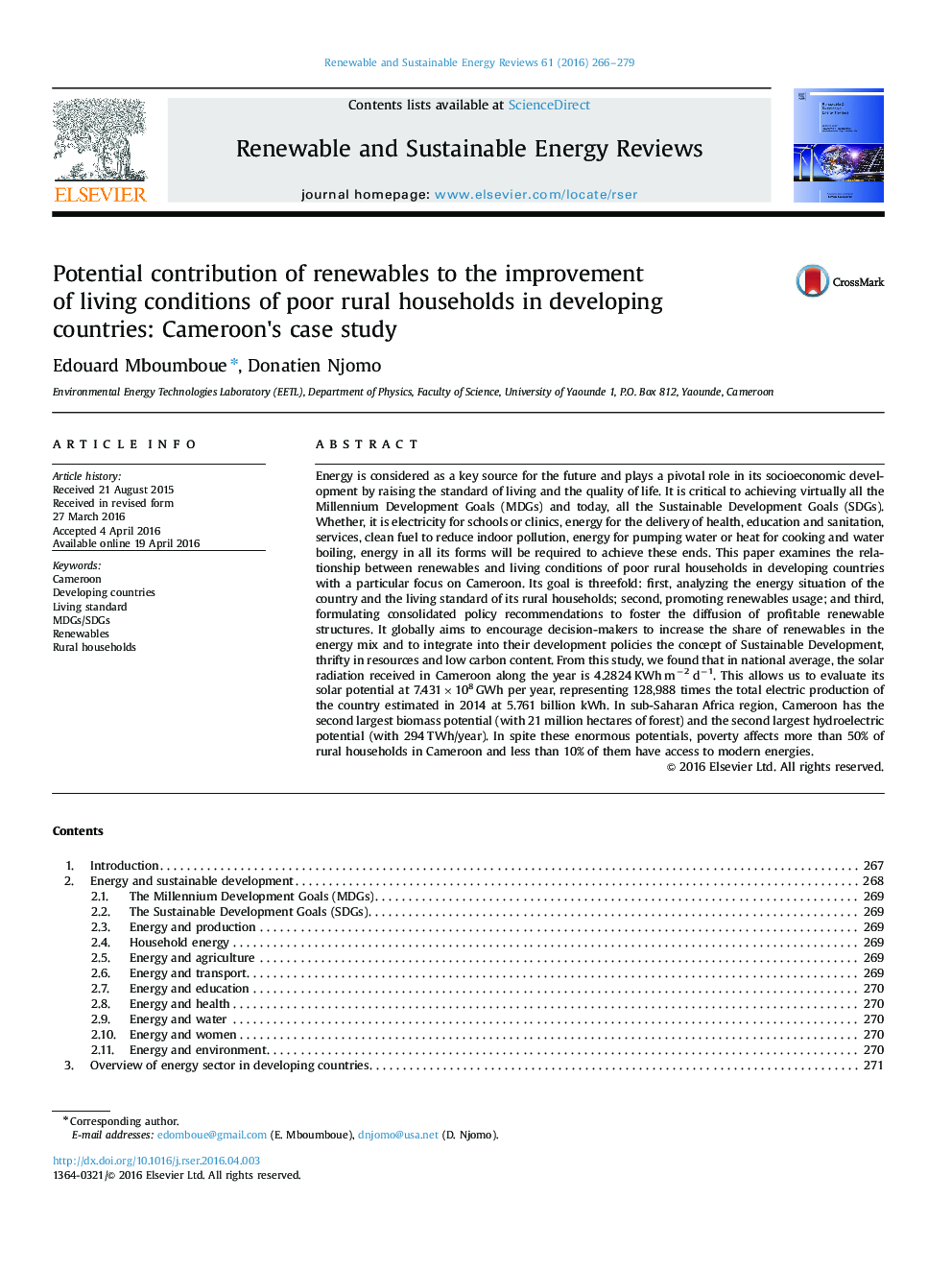| کد مقاله | کد نشریه | سال انتشار | مقاله انگلیسی | نسخه تمام متن |
|---|---|---|---|---|
| 1749798 | 1522324 | 2016 | 14 صفحه PDF | دانلود رایگان |

Energy is considered as a key source for the future and plays a pivotal role in its socioeconomic development by raising the standard of living and the quality of life. It is critical to achieving virtually all the Millennium Development Goals (MDGs) and today, all the Sustainable Development Goals (SDGs). Whether, it is electricity for schools or clinics, energy for the delivery of health, education and sanitation, services, clean fuel to reduce indoor pollution, energy for pumping water or heat for cooking and water boiling, energy in all its forms will be required to achieve these ends. This paper examines the relationship between renewables and living conditions of poor rural households in developing countries with a particular focus on Cameroon. Its goal is threefold: first, analyzing the energy situation of the country and the living standard of its rural households; second, promoting renewables usage; and third, formulating consolidated policy recommendations to foster the diffusion of profitable renewable structures. It globally aims to encourage decision-makers to increase the share of renewables in the energy mix and to integrate into their development policies the concept of Sustainable Development, thrifty in resources and low carbon content. From this study, we found that in national average, the solar radiation received in Cameroon along the year is 4.2824 KWh m−2 d−1. This allows us to evaluate its solar potential at 7.431×108 GWh per year, representing 128,988 times the total electric production of the country estimated in 2014 at 5.761 billion kWh. In sub-Saharan Africa region, Cameroon has the second largest biomass potential (with 21 million hectares of forest) and the second largest hydroelectric potential (with 294 TWh/year). In spite these enormous potentials, poverty affects more than 50% of rural households in Cameroon and less than 10% of them have access to modern energies.
Journal: Renewable and Sustainable Energy Reviews - Volume 61, August 2016, Pages 266–279